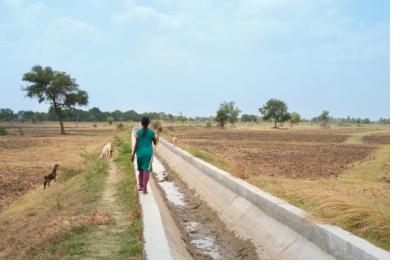Excerpt from article by Giriraj Amarnath, IWMI
Experts at COP 27 have made apocalyptic forecasts of weather under climate change if urgent action is not taken. In South Asia, the anticipated ‘climate chaos’ is already a reality for many, with extreme droughts and floods increasingly affecting the region. According to the World Bank, losses will average USD 160 billion per year by the end of this decade if current trends continue. If South Asian nations and communities are to cope as climate change progresses, they need advance warning of extreme events, so they can put mitigation plans into action, and avoid climate hazards becoming major disasters.
In response, IWMI, in collaboration with the Indian Council for Agricultural Research, Japan’s Ministry of Agriculture, Forestry and Fisheries (MAFF) and other partners, has launched its next-generation South Asia Drought Monitoring System (SADMS) platform. This cloud-based, integrated drought-management portal makes available all the information needed to forecast, monitor and manage drought, for free, to anyone with a desktop computer and internet access. Having sufficient notice that a drought is emerging can support farmers, extension workers, water managers, and national and regional authorities to enact mitigation strategies, thereby reducing vulnerability to extreme floods and droughts in the long term.
The SADMS platform, which covers Afghanistan, Bangladesh, Bhutan, India, Nepal, Pakistan and Sri Lanka, provides seasonal, sub-seasonal and seven-day weather forecasts as easy-to-interpret on-screen maps; monitoring tools that indicate when drought is present and, if so, the level of severity; and district-level agricultural contingency plans that can be put into early action if the system indicates that particular triggers have been reached. The monitoring and forecasting components of SADMS are based on indices including vegetation health, rainfall levels and soil moisture, which can identify the extent to which drought is present and, over time, developing.
[...]
Image: Dried-up canal in Gujarat. Photo: Hamish John Appleby / IWMI

